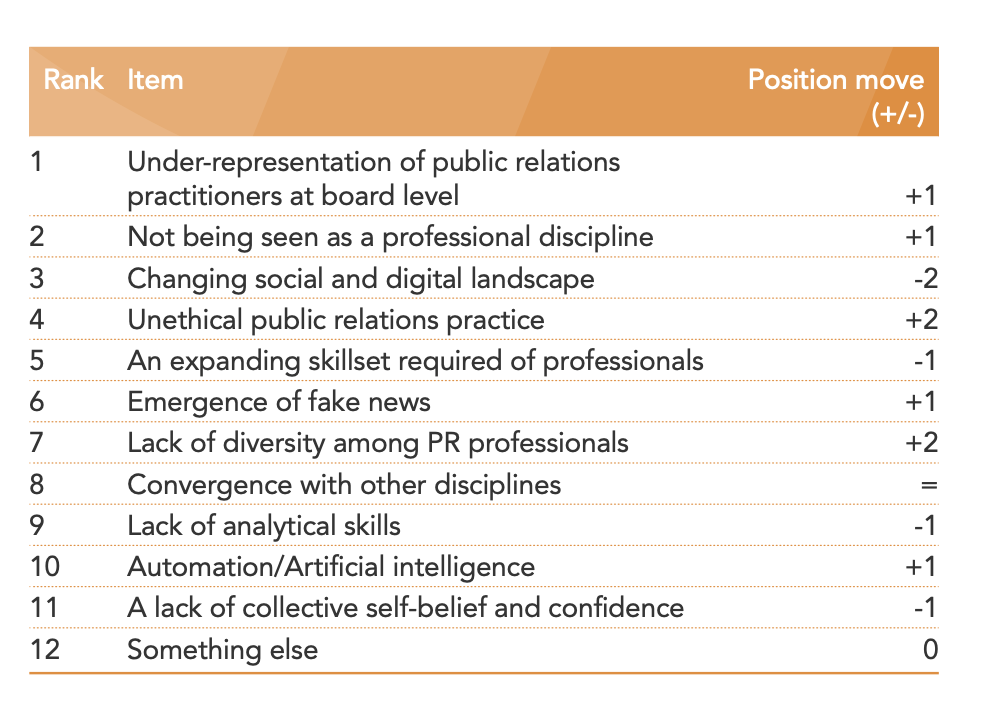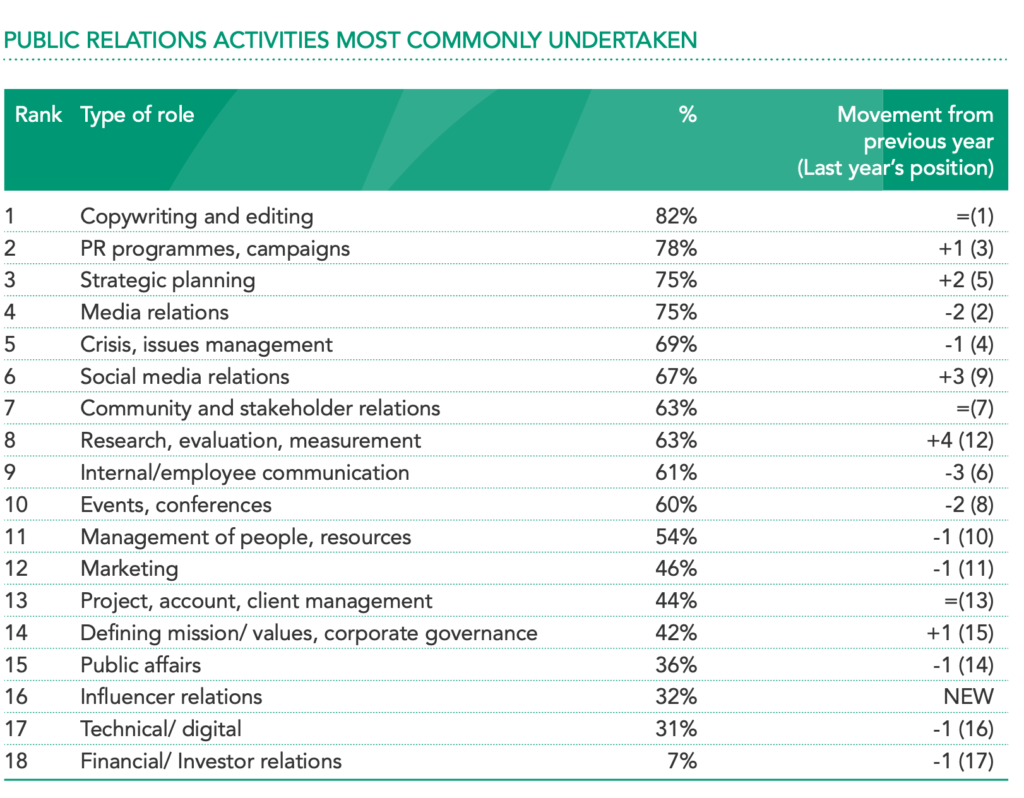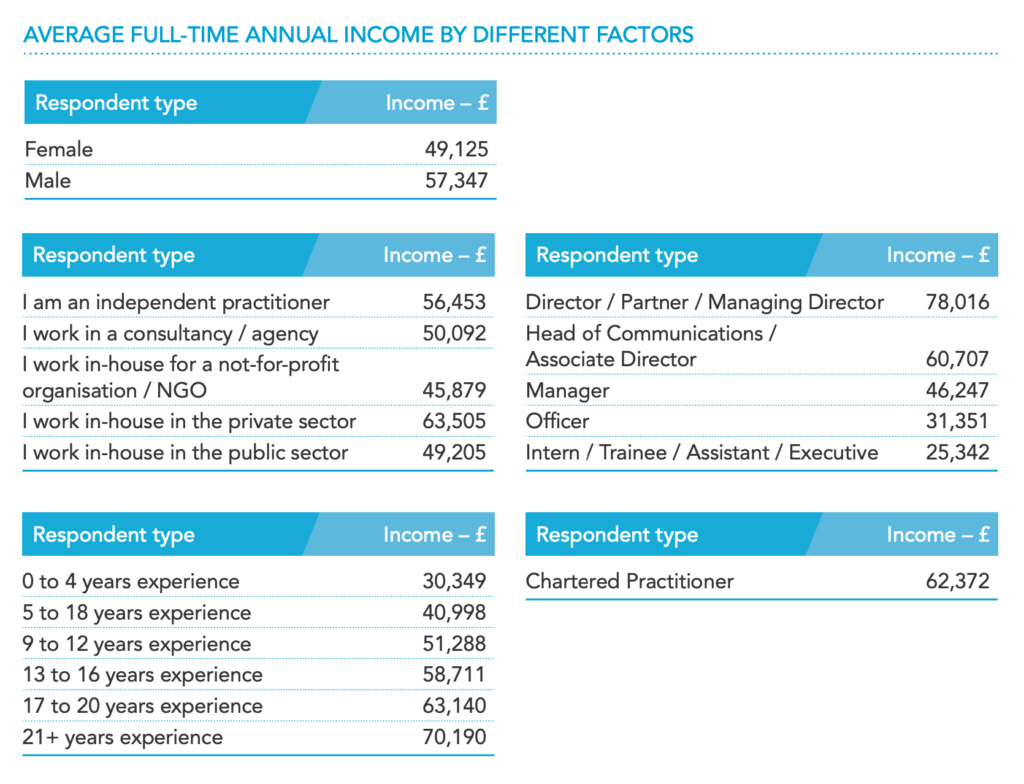Today the CIPR’s State of the Profession Report (2020) has been launched
About the respondents
- 1,298 respondents
- 35-44 year olds represent 37% of the data, followed by 25-34 years old 26% of respondents (63%)
- 66% female and 34% male respondents
- 30% of respondents are from public sector (largest number of respondents by type)
- 92% of respondents identify classify themselves as white
- 70% of respondents are CIPR members
- 20% belong to no professional body at all
- 45% of respondents came from a media/journalism background, before working in PR
- 51% have worked in the industry for 13+ years. (22% for 21+ years)
- 32% manager level and 45% are senior – Head of Comms, Director, MD, Partner
Challenges facing PR

Salaries and gender gap
The gender pay gap persists, but it is shrinking. Before regression analysis it is now £8,222, a reduction of 12% since 2018. The pay gap after regression analysis has shrunk by 46% since 2018 and now stands at £3,658.
The pay gap differs according to role. Female managers earn on average £573 less than male managers but female Directors, Partners and Managing Directors earn £19,490 less than males in equivalent roles.
Skills attributes and knowledge
Social mobility
Overall, practitioners (37%) are significantly more likely than the general public (20%) in their view, to think that their family background gave them career advantages
and are slightly more likely to believe that it is becoming harder for less advantaged people to professionally progress (42% vs 39%).
41% of respondents believe that everyone has a fair chance to go as far as their talent and hard work will take them. 29% believe that where you end up is mainly determined by your background or who your parents are. This compares to 35% of UK adults who feel everyone has a fair chance to go as far as their talent and hard work will take them and 44% who feel that where you end up is largely determined by background and parents.
Diversity
Despite a small improvement, more than nine in ten (91%) classify themselves as white. (2019 reported 92%)
In 2019, 89% of practitioner respondents classify themselves as heterosexual and in 2018 the proportion was 85%. This year 86% classify themselves as heterosexual with fewer than one in ten identifying as lesbian, gay, bi-sexual or asexual.

